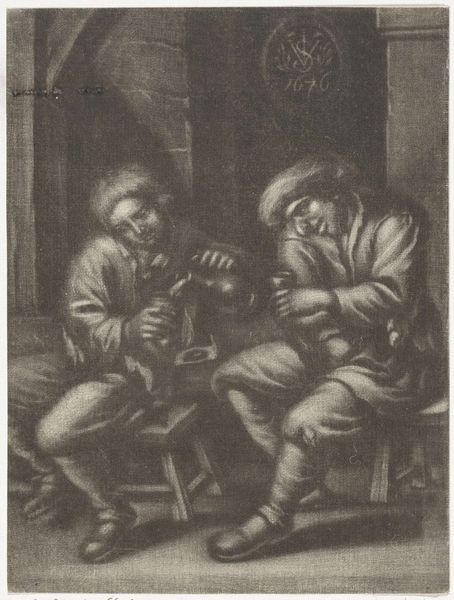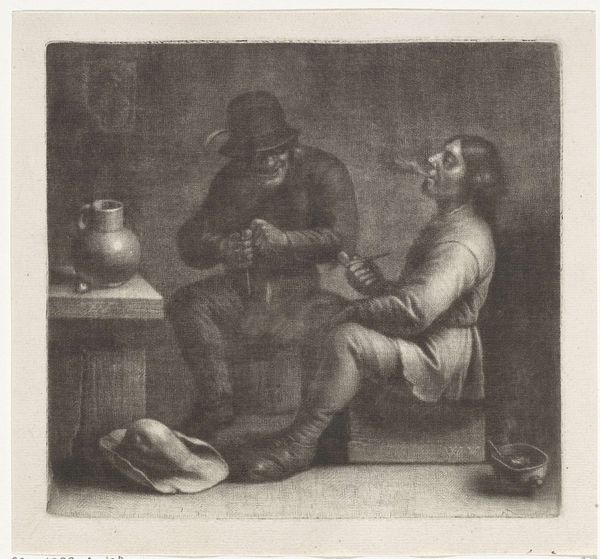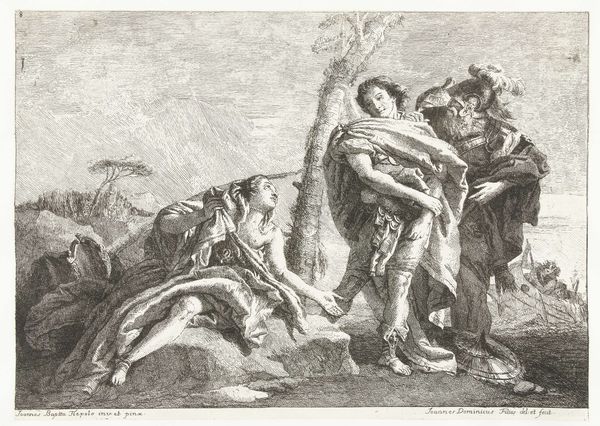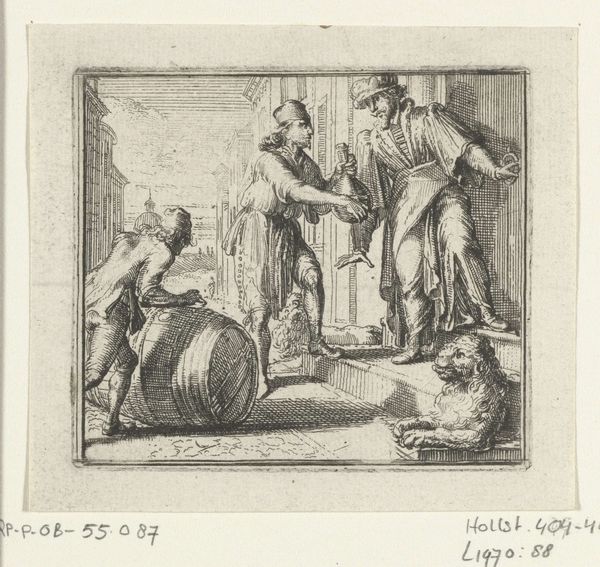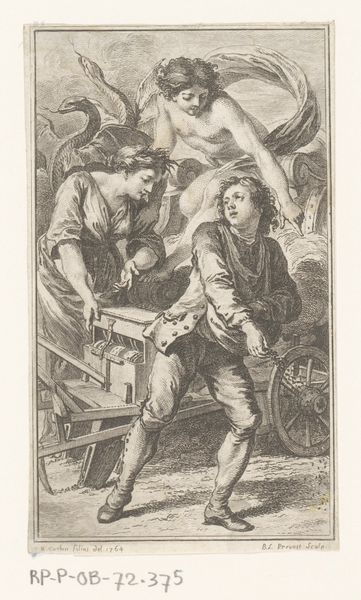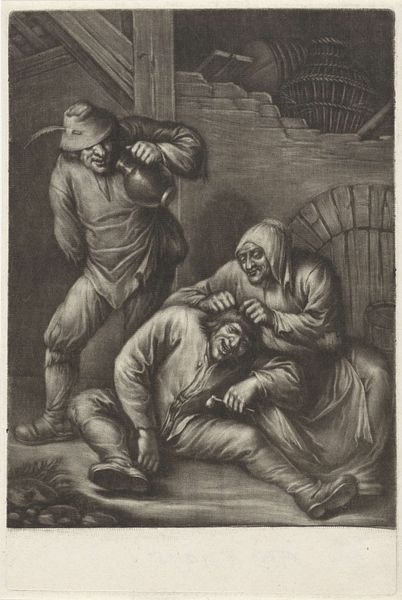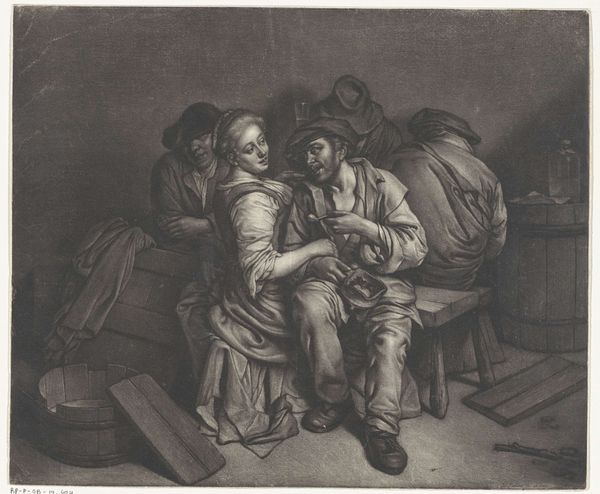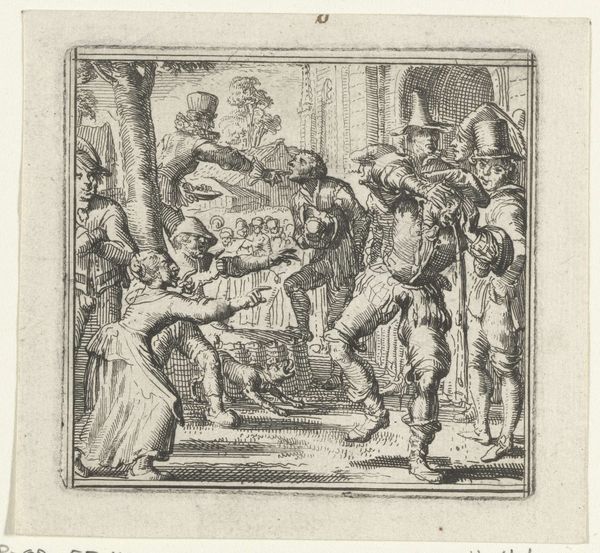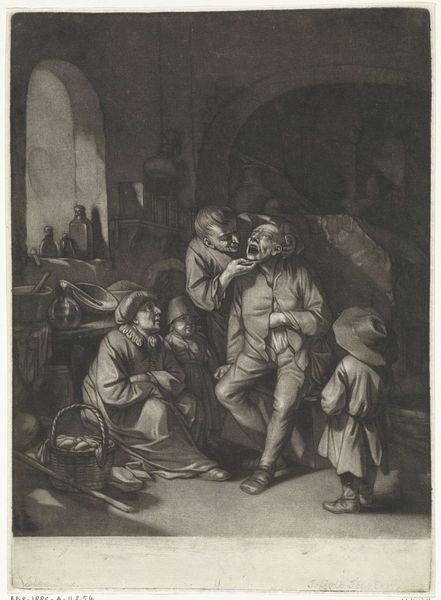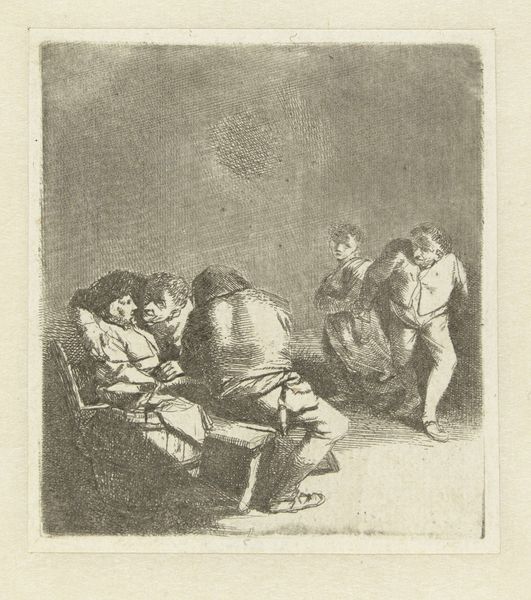
print, etching, ink, engraving
#
portrait
#
dutch-golden-age
# print
#
etching
#
ink
#
genre-painting
#
engraving
Dimensions: height 223 mm, width 276 mm
Copyright: Rijks Museum: Open Domain
Editor: Wallerant Vaillant’s etching, "Vioolspeler in een herberg," or "Violin Player in a Tavern," made sometime between 1658 and 1677, really gives me the feeling of being in a smoky, boisterous Dutch tavern. It’s captivating. What strikes you most about this scene? Curator: Well, given my perspective, I'm immediately drawn to the socio-economic context hinted at by the materiality of the image itself. An etching is, after all, a reproduction. Consider the labour involved in its creation: the skilled artisan replicating an image, making it accessible to a wider audience than an original painting. Editor: So, you're saying that the medium itself is significant? Curator: Precisely. It speaks to a burgeoning market for art accessible to the merchant class, not just the aristocracy. Look at the scene: a musician, presumably playing for a living, surrounded by others drinking. This isn't idealized portraiture, it's a slice of everyday life. Editor: I see what you mean. The choice of printmaking opens it up to everyday consumption. The details in the clothing of the figures might speak to something as well? Curator: Absolutely! Notice the worn fabrics, the simple garments. What does that say about their place in Dutch society during its Golden Age? It’s a depiction of labour and leisure intertwined, manufactured for a market eager to see themselves reflected, or perhaps titillated by a glimpse into a different social stratum. How does considering that impact your initial sense of the image? Editor: It adds a layer of complexity that I hadn't fully considered. It’s not just about the tavern scene, but also about Vaillant making art accessible to others. Curator: Exactly! It brings the whole piece, and its cultural significance, to life.
Comments
No comments
Be the first to comment and join the conversation on the ultimate creative platform.

